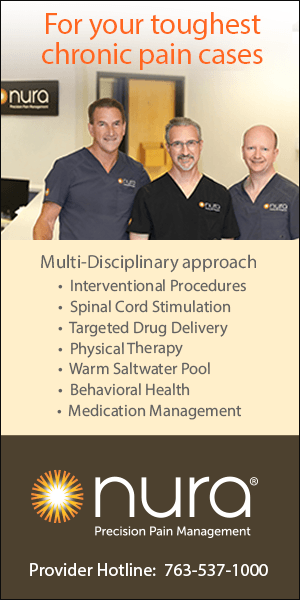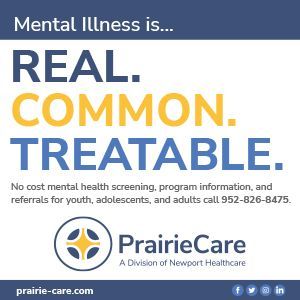rthopedic surgery continues to change at a great pace. Improved implants provide an increased range of motion with enhanced stability and durability. Minimally invasive techniques lessen soft-tissue damage for expeditious discharge and rehabilitation. Going forward, computer-assisted surgery is poised to help ensure reproducible and accurate placement of implants.
Specialty Care
Orthopedic Care for Older Adults
A New Calculus
BY Sarah Anderson, MD, and Mai Nguyen, MD
Most important, however, procedures have become safer even as they’ve become more complex.
These developments are responsible, in part, for another evolution: the increasing age of patients undergoing orthopedic surgery. In 2022, there were more than 18.5 million orthopedic procedures performed in the United States, and about 50% of these procedures were for people over the age of 65.
Certainly, the growth is fueled by the increase in the over-65 population, which grew 34% from 2010 to 2020. But another factor is higher utilization. In a three-year period, 13.6% of people over 65 years old had orthopedic treatment – this is about 50% higher than other adults. This is partly due to increased longevity, but another factor is a changing mindset.
Older Adults Want to Stay Active, Longer
Compared to previous generations, older adults are less likely to take aging sitting down. They’re remaining active longer – playing pickleball in their 70s, biking in their 80s, and ballroom dancing in their 90s and beyond. They don’t want to be slowed down by joint problems and are more likely to seek out elective procedures for arthritis and other conditions that are increasingly prevalent with age.
Osteoarthritis is the most common reason for orthopedic surgery in older adults, with the most common procedures being total knee arthroplasty and total hip arthroplasty. However, we’re also seeing an increase in orthopedic trauma procedures. This, too, is inextricably linked to the changing behaviors of older adults. Being active, they’re more prone to injuries, and because their bones are more frail, something as minor as a trip or fall can result in orthopedic trauma.
Procedures have become safer even as they’ve become more complex.
Unique Challenges in Orthopedic Surgery for Older Adults
With advanced age comes increased perioperative and postoperative complications. Orthopedic procedures in older adults, especially trauma surgeries, can quickly become complex. When stressed by trauma or surgery, stable medical conditions can quickly become unstable. Surgeries that are simple in younger patients can become more complicated in older patients with decreased bone density and decreased muscle mass.
Fractures related to osteoporosis come with their own challenges due to microarchitecture and decreased bone mass, which affect fracture fixation and healing properties. Dual plating, use of nail-plate combination fixation and increased use of total hip arthroplasty for femoral neck fractures are just a few examples of practice changes geared toward maintaining mobility and function in our older patients – both in the short and in the long term.
However, a patient’s risks don’t end when we finish closing the surgical incision. Older patients have higher rates of complications such as infection, blood clots, bedsores, urinary tract infection and pneumonia, particularly in the first postoperative week. Delirium is of particular concern as it is associated with poorer surgical outcomes and increased mortality as well as longer hospital stays and increased rates of institutionalization – all of which drive higher costs and greater resource utilization.
Even when perioperative and postoperative complications are well-managed, returning to a functional baseline can be time-consuming and challenging. A contributing factor is that fracture healing can take up to four months in older adults, compared to 6-10 weeks in younger adults.
Orthopedic Patient Outcomes Are Increasingly Positive for Older Adults
Despite the unique challenges regarding orthopedic surgery in older adults, the Regions Hospital orthopedic surgery department is seeing increased success in treating complex injuries in even the frailest of patients. Results from our clinical research highlight some of the ways that orthopedic surgery for older adults is evolving.
Fragility pelvic fractures: These fractures have traditionally been treated non-operatively. Using minimal invasive surgical techniques, however, these fractures can now be treated with percutaneous screw fixation. It appears that patients with fragility pelvic ring fractures may experience a faster recovery with the surgical fixation compared to patients who are treated non-operatively. A prospective randomized controlled trial to study the outcomes is underway.
Chest wall injuries: Surgical treatment is evolving for chest wall injuries including rib, sternal and scapular fractures. Fixation of these injuries in the appropriate patients can provide improved pulmonary mechanics.
Patient-reported outcomes: Another way we gauge patient trends is by collecting patient reported outcomes (PROs) following orthopedic injuries. To date, we have enrolled approximately 11,000 patients into our PRO Orthopedic Trauma Program and have captured approximately 17,000 patient assessments. Very few organizations are currently collecting orthopedic trauma PROs, but we believe this is absolutely vital for shaping the future of orthopedic care in older adults.
Orthopedic Care for Older Adults: Things to Consider
The following are orthopedic surgery considerations for older adults:
Expect the Best, Prepare for the Worst
Despite new techniques and implants, surgery doesn’t always go as planned. If your older patient was in an accident and has a complex injury, transferring him or her to a more advanced care provider, like a trauma hospital, helps ensure comprehensive assessment, treatment and support. In Minnesota, there are four levels of trauma centers. Level I trauma hospitals have the greatest number of resources, and Level IV trauma centers have the fewest.
Level I trauma centers have experts in every subspecialty that specifically focus on trauma patients. This ensures that the most up-to-date options are available both for patients with acute orthopedic trauma and for those experiencing the long-term sequelae of traumatic injury.
Level II trauma centers also care for orthopedic trauma but don’t have the range of specialists that can be invaluable when treating complex patients. Tertiary care needs are often referred to Level I trauma centers.
Level III trauma centers provide emergency care and stabilize injured patients. Once a patient with orthopedic trauma is stabilized, they’re referred to a Level I or a Level II center for more comprehensive treatment.
Level IV trauma centers provide advanced trauma life support before transferring patients to a higher-level trauma center.
Surgery might now be an option for people who would have been considered too old or too sick in the past
Because orthopedic trauma injuries can be so complex, they’re best treated at the highest level of trauma center that’s accessible to the patient. When your patient is treated at a Level I trauma hospital, there are contingencies for the unexpected. Patients with severe cardiopulmonary disease can be optimized for surgery by expert subspecialists and cared for during surgery by board-certified anesthesiologists with experience in trauma and geriatric orthopedic surgery. Additionally, there is easy access to dialysis, intensive care and palliative care for these complex patients when needed.
Teamwork Makes the Dream Work (or at Least Better Outcomes)
In our experience, the foundation of optimal orthopedic care for older adults is communication and coordination that spans across disciplines. At Regions Hospital, we have a multidisciplinary team involved in the care of these patients. This extends from surgeon experts in trauma, plastics, vascular and neurosurgery to medical experts in cardiology, intensive care and hospital medicine, just to name a few. All patients have access to physical and occupational therapy and care management expertise as well.
Treat the Whole Patient
Older adults have unique health concerns such as a deterioration in strength, mobility and agility. Most older patients also have one or more medical conditions that could impact procedural outcomes.
Before surgery is considered, it’s essential to identify and control preexisting conditions. Elective surgery may be delayed in order for a patient to optimize underlying health issues. This optimization can decrease the risk of complications after surgery. Some specific areas of involvement may be:
Nutrition: Malnutrition is a serious problem among older patients undergoing orthopedic procedures. Preoperative nutritional support is beneficial and can significantly reduce mortality and surgical complications.
Weight control: Obese patients may benefit from support to help them lose weight prior to surgery.
Physical therapy: Increasing strength and flexibility before surgery can be instrumental in improved patient outcomes and can help expedite the healing process.
Diabetic management: Poorly controlled blood sugars can significantly increase the risk of postoperative complications such as wound breakdown or infection. Elective surgeries may be delayed in order to control this.
Cardiovascular optimization: Many older patients have underlying heart or vascular disease. While this can increase risks, optimization may still make surgery a safe option for these complex patients.
Look Beyond a Person’s Age
Previously, the patient’s age was the largest factor when considering surgical fitness in the elderly. Patient frailty, however, is often a more significant factor when assessing postoperative risk in surgical management, as those individuals are at a higher risk of complications. Additionally, they tend to have longer hospital stays and a much lower rate of return to baseline function after surgery.
Indicators of poor results include cognitive impairment, poor postoperative pain control, pulmonary complications, falls, malnutrition, urinary tract infections, pressure ulcers and functional decline.
Surgery Isn’t Always the Best Option
Surgery might now be an option for people who would have been considered too old or too sick in the past, but that doesn’t mean that surgery is the right choice for everyone.
When a patient is referred to an orthopedic surgeon for surgical discussion, there is much more than just a yes or no conversation. Patients are educated on the risks and benefits of both operative and nonoperative treatments. We review the surgical treatment and the anticipated postoperative recovery, along with potential complications and expected outcomes. The surgeon, patient and family are all part of shared decision-making to determine the best overall plan.
Help Patients Move Toward Success
Primary care providers play a key role in the success of orthopedic surgery in older adults. They’re usually the first clinicians to see a decline in physical function, and they’re the first to answer questions about elective orthopedic procedures. There are many nuances when determining the suitability for surgery and how to ensure best outcomes. If there are questions, often the best course of action is to discuss the case with an orthopedic surgeon.
What’s Next for Orthopedic Surgery
Orthopedic surgery is a study in continuous change. As technology improves, older adults will have more treatment options than ever before. Looking forward, we expect that surgical innovations, along with our aging population, will continue to drive an increasing number of older adults to seek elective procedures. Ensuring the best outcomes for these older adults will necessitate high levels of partnership across primary care and specialty providers. It’s also essential to ensure that patients have a full understanding of the options that could keep them active and involved with life.
At Regions Hospital, our goal is the same as yours: to ensure patients get the care they need to stay healthy and happy. With a diverse team of surgeons and advanced practice providers, we offer the full spectrum of orthopedic care from managing a simple sprained ankle or sore arthritic knee to reconstructing major traumatic injuries to restore mobility.
Sarah Anderson, MD, is is the vice chief of orthopedics and foot and ankle specialist at Regions Hospital. She is also an associate professor at the University of Minnesota Medical School.
Mai Nguyen, MD, is an orthopedic trauma surgeon at Regions Hospital and an assistant professor at the University of Minnesota Medical School. She is the Research Director of the North Star Trauma Network in the Twin Cities metro area.
MORE STORIES IN THIS ISSUE
cover story one
A Crisis in Home Health Direct Care: The Minnesota Solutions Model
By Jesse Bethke Gomez, MMA
cover story two
The MN 2035 Plan: Improving Public Health
By Thomas E. Kottke, MD, and Clarence Jones




















